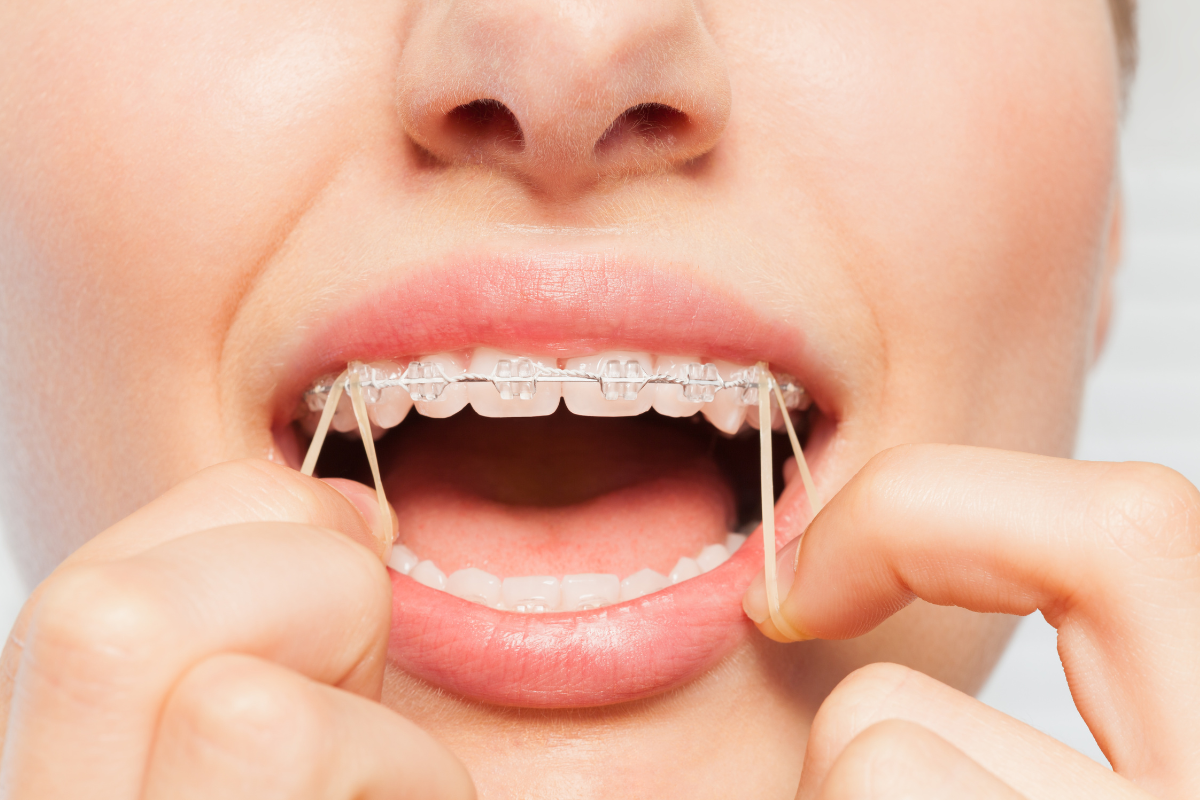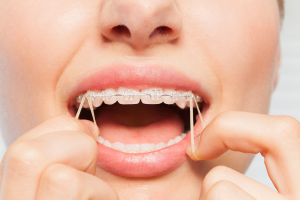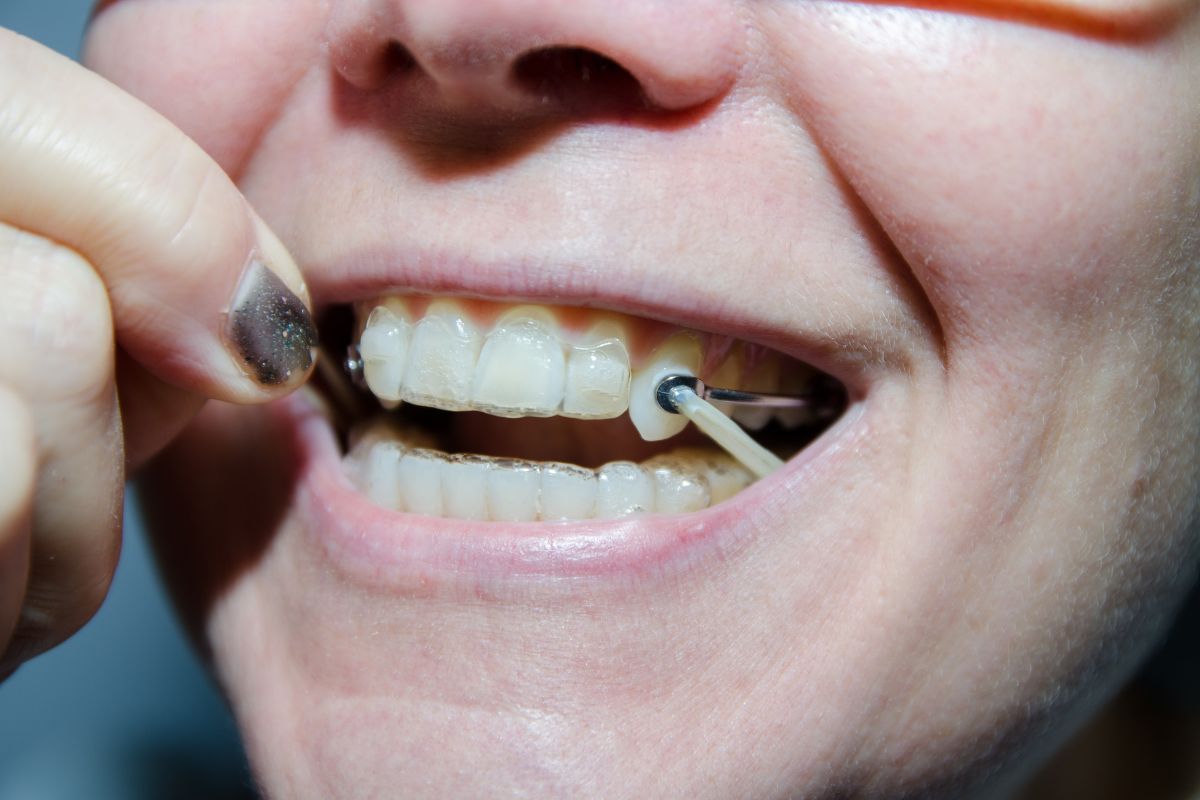


If you or someone you know is undergoing orthodontic treatment with braces, you might have heard about “brace elastics.” These small, stretchy bands play a crucial role in the braces journey, but many still question their purpose and usage. In this article, we’ll dive deep into brace elastics, explaining their functions, types, and how to care for them. Let’s get started!
So, What are Brace Elastics?
Brace elastics, also known as rubber bands, are an integral part of orthodontic treatment with braces. They are used to exert additional force on the teeth and jaw, correcting various dental issues. Whether it’s fixing misalignments, closing gaps, or adjusting bites, brace elastics play a significant role in achieving that perfect smile.
Types of Brace Elastics
Class I Elastics
Class I elastics are used in orthodontics to close gaps between teeth. These elastics are typically placed between the upper first or second molar hook and the upper cuspid hook. The purpose of using Class I elastics is to bring teeth closer together, helping to eliminate spaces or gaps that may be present in the patient’s dental arch. The elastics gradually move the teeth into the desired position by applying gentle pressure on the teeth, resulting in a more aligned and aesthetically pleasing smile.
Class II Elastics
Class II elastics serve a specific purpose in orthodontic treatment: correcting an overjet. An overjet refers to the horizontal distance between the upper and lower front teeth when the patient bites down. In cases with excessive overjet (commonly known as “overbite”), Class II elastics retract the upper teeth and simultaneously move the lower teeth forward. By doing so, the orthodontist aims to bring the upper and lower dental arches into better alignment, thereby reducing the overjet and improving the bite.
Class III Elastics
Class III elastics address an underbite, also known as a negative overjet. An underbite occurs when the lower front teeth protrude in front of the upper front teeth when the patient bites down. To correct this malocclusion, Class III elastics retract the lower teeth while advancing the upper teeth. This movement helps to harmonize the upper and lower dental arches, correcting the underbite and improving the overall bite relationship.
Getting Started with Brace Elastics
- Placement by Orthodontist – Your orthodontist will guide you on how to wear the elastics properly and provide instructions on the desired wear schedule.
- Self-Adjustment Tips – You can adjust the elastics yourself, as instructed by your orthodontist, but be cautious to keep them manageable.
- Wear and Replacement Schedule – Follow the recommended wear and replacement schedule to maintain effective treatment.
Maintaining Oral Hygiene with Brace Elastics
- Brushing Techniques – Use specialized toothbrushes and techniques to clean around brackets and elastics effectively.
- Flossing Methods – Floss threaders or interdental brushes can help clean between teeth and around braces.
- Dietary Considerations – Avoid sticky or hard foods that damage braces and elastics.
Common Challenges with Brace Elastics
- Discomfort and Soreness – Mild discomfort and soreness are common after initial placement or adjustments.
- Bands Snapping – Elastics can snap due to wear, but replacements are readily available.
- Swallowing Elastics – Accidentally swallowing elastics is rare but not harmful. They will pass through the digestive system naturally.
Wear your Elastics!
Brace elastics are an essential part of the orthodontic journey, assisting in correcting misalignments, closing gaps, and improving bites. Understanding their types, usage, and maintenance is crucial for successful treatment. Remember to follow your orthodontist’s advice and wear your brace elastics diligently to achieve the best possible results.
Start your Smile Transformation Journet with Us!
“A positive self-image and self-confidence can result from proper orthodontic care.”
This belief has been our foundation for over 17 years of creating beautiful, straight, and confident smiles!
With thousands of finished cases under our belt, we are confident in our ability to provide you and your family with excellent treatment delivered with expertise and care.
Plan your smile with one of the best Orthodontists in Toronto, Ontario. Schedule a virtual care or in-office appointment with us! Let’s work together to create the best smile for you and your family.
Frequently Asked Questions
How long do I need to wear brace elastics daily?
The wear time varies depending on the treatment plan, but typically, they should be worn for 12 to 24 hours daily.
Can I change the elastics color?
Yes, you can choose different colors during each visit to the orthodontist.
What should I do if an elastic band breaks?
Contact your orthodontist immediately for guidance and a replacement.
Can I remove the elastics for eating?
It is recommended to remove elastics while eating and then reapply them afterward.
How do I know if my elastics are the right size?
Your orthodontist will provide you with the appropriate elastic size, and following their instructions is essential.
Recent Posts
-
Inside the World of Orthodontists: Education, Precision, and Transformative Treatments
The Evolution of Orthodontics: A Brief Historical Overview Orthodontics, an integral branch…
-
How Orthodontists Plan a Treatment for a Beautiful Smile
Understanding the Patient's Unique Needs A positive self-image and confidence can result…
-
Unleash Your New Smile! Here's What You Need to Know Before Braces Removal
Are you excited to see your smile transformation? Taking your braces off…
-
Traits That a Good Orthodontist Should Have
Choosing an orthodontist is half your smile transformation journey. That’s why in…
-
How Braces Can Help Fix an Asymmetrical Jawline
An asymmetrical jawline can cause concern for many individuals, affecting their appearance…
-
Can Cavities Be Reversed?
Cavities are among the most common dental issues people of all ages…
-
What to Prepare During Your First Braces Appointment
Are you about to embark on your journey to a beautiful smile…
-
Taking Care of Baby Teeth: A Comprehensive Guide for Parents
Caring for our children's health is one of our most crucial responsibilities…
-
What are Brace Elastics?
If you or someone you know is undergoing orthodontic treatment with braces,…
-
Difference Between an Overjet and Overbite: A Comprehensive Guide
Two orthodontic terms that often confuse our patients are "overjet" and "overbite."…






 Instagram
Instagram
